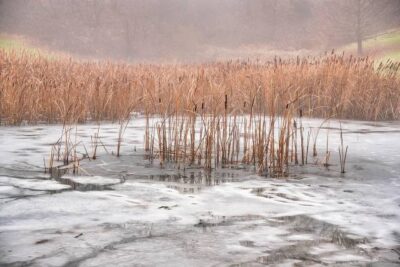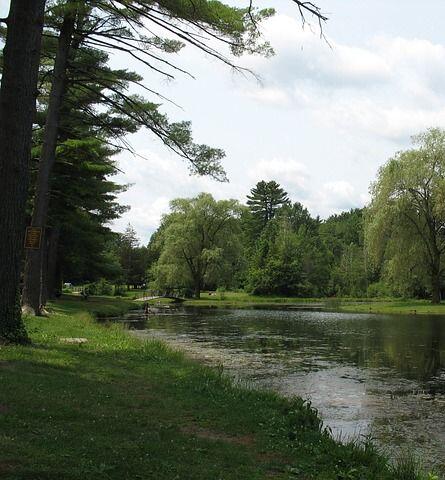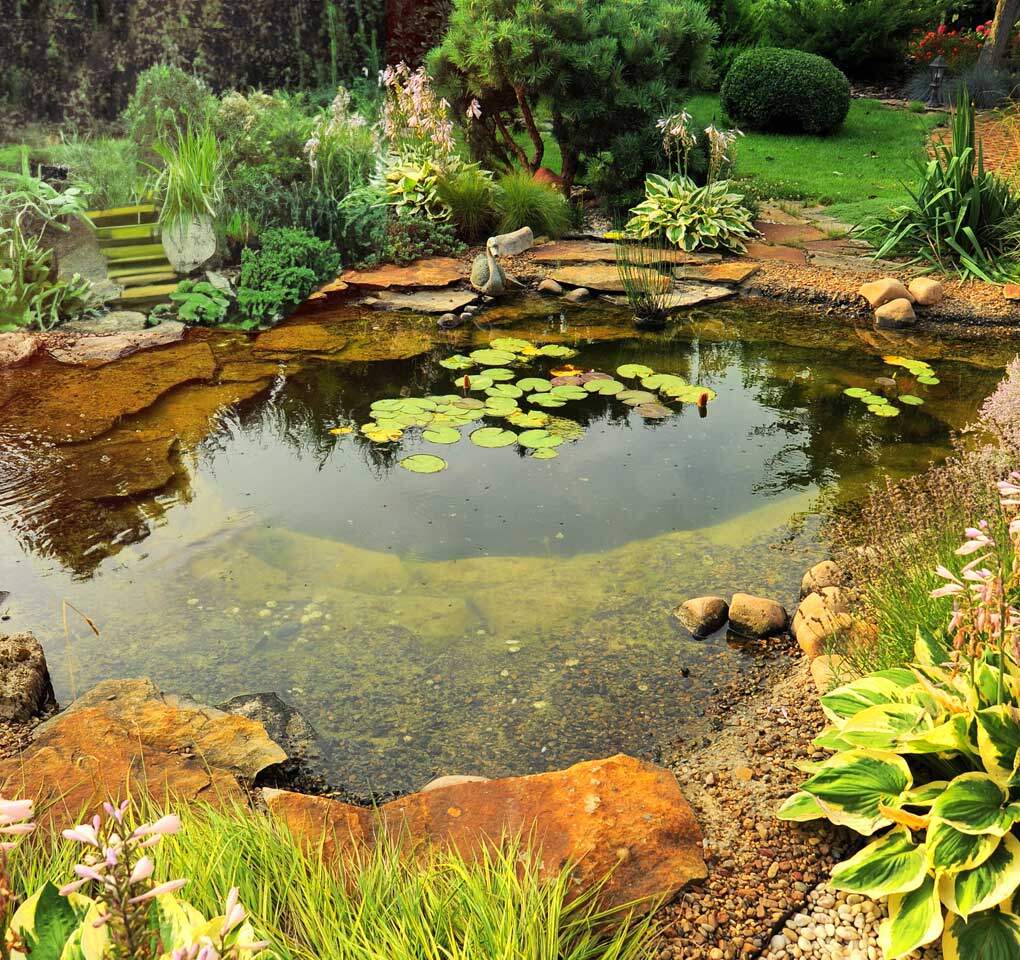It’s December gain in Upstate New York and the Southern Tier, and this is a reminder that pond owners in our region (as elsewhere) need to take proactive steps to ensure the health and longevity of their ponds during these colder months. The freezing temperatures and changing environmental conditions can lead to several common winter pond problems that can impact water quality, fish health, and the overall ecosystem.
Ice Formation and Oxygen Depletion
 One of the most common winter pond problems is the formation of ice, which can severely impact oxygen levels in the water. As temperatures drop, ice forms on the surface of the pond, trapping air underneath. Without proper oxygen exchange, fish and aquatic life may struggle to survive. Oxygen depletion is particularly concerning for ponds that are home to fish, as they rely on dissolved oxygen to breathe.
One of the most common winter pond problems is the formation of ice, which can severely impact oxygen levels in the water. As temperatures drop, ice forms on the surface of the pond, trapping air underneath. Without proper oxygen exchange, fish and aquatic life may struggle to survive. Oxygen depletion is particularly concerning for ponds that are home to fish, as they rely on dissolved oxygen to breathe.
To prevent oxygen depletion in your pond, it’s important to install an aeration system that keeps the water moving, especially during the winter months. Aerators help maintain open water areas and prevent the ice from sealing off the pond completely. Another option is to use a pond de-icer, which keeps a portion of the pond surface free of ice and allows gases like carbon dioxide to escape. This can help maintain a healthier environment for fish and other pond inhabitants during the winter.
Fish Stress and Winter Kill
Fish stress is another common winter pond problem that arises when oxygen levels drop or when the pond becomes too cold for the fish species to thrive. In extreme cases, this stress can lead to “winter kill,” a phenomenon where fish die due to a combination of oxygen depletion and toxic gas buildup under the ice. Winter kill is most often a concern in shallow ponds, where oxygen depletion happens more quickly, and ponds that don’t have a proper aeration system or de-icer in place.
To prevent winter kill, you should carefully monitor the temperature and oxygen levels in your pond. Consider testing the water regularly before the temperatures drop to ensure that your pond has adequate oxygen levels to support the fish through the winter. If you notice a significant drop in fish activity or signs of distress, it’s important to take immediate action to address the issue, such as increasing aeration or adding a de-icer to keep the water moving.
Excessive Ice Thickness and Damage
Another winter pond problem many pond owners encounter is excessive ice thickness, which can cause structural damage to the pond’s edges or liner. As the ice builds up, the pressure can cause the liner to crack or shift, potentially leading to leaks when the ice melts in the spring. This can result in expensive repairs and an unnecessary headache for pond owners.
To prevent this, ensure that your pond is well-maintained throughout the year, so there is less chance of significant structural issues come winter. In addition, consider installing a pond cover or netting to prevent excessive snow accumulation on the ice, which can add weight and increase pressure on the pond’s surface. Regularly removing snow from the ice can reduce this risk, especially if you live in an area that receives heavy snowfall.
Debris Buildup and Water Quality Issues
Throughout the fall and into the winter, fallen leaves, twigs, and other organic debris can accumulate on the surface of the pond and become trapped beneath the ice. As the organic matter decomposes over the winter, it releases nutrients that can lead to water quality problems, such as algae blooms in the spring. High levels of organic matter can also contribute to the buildup of harmful gases under the ice, further stressing the pond’s ecosystem.
To prevent debris buildup, take the time to clean your pond before the first freeze. Remove any leaves or floating debris that could cause problems later on. You can also use a pond net to keep debris from falling into the water during the winter months. If you’re unable to remove all of the organic matter before the freeze, consider using a pond enzyme or bacteria treatment in early spring to help break down the buildup and restore water clarity.
Preventing Ice Damage to Aquatic Plants
Aquatic plants, which help maintain water quality and provide habitat for fish and other pond life, are also at risk during the winter months. Ice can damage or kill these plants, especially if they are not properly cared for before the cold weather sets in. When ice forms on the pond, it can crush submerged plants, or the plants may struggle to survive with reduced sunlight and oxygen levels.
To prevent ice damage to your aquatic plants, it’s essential to properly winterize them. For pond plants that are not hardy to your region’s winter conditions, consider removing them from the water before the first freeze and storing them in a cool, dark place until spring. Hardy plants should be trimmed back, and any floating plants should be removed from the pond to reduce the risk of ice damage. For plants that remain submerged, ensure that the pond has proper aeration to maintain enough oxygen for plant survival.
Conclusion
Winter pond problems, like ice formation, oxygen depletion, fish stress, and debris buildup, can pose significant challenges for pond owners in Upstate New York. However, with a little preparation and proactive maintenance, many of these issues can be easily prevented. Regularly monitoring your pond’s health, ensuring proper aeration, and taking steps to protect aquatic life will help your pond weather the winter months and emerge in the spring ready to thrive.
If you’re unsure about how to properly winterize your pond or if you’re facing ongoing winter pond problems, it’s always a good idea to consult a professional pond maintenance service. With expert guidance, you can prevent common winter pond problems and enjoy a vibrant, healthy pond year-round.





